A product designed using biomimetic technology is not only innovative but also potentially sustainable. Nature works as a system that gives effective and sustainable outcomes.
“Learn from nature” — William Wordsworth
The world’s principal mentor—Nature, has inspired many great creations starting from Velcro and climbing pads to genetic algorithms and manipulating robots that have led to a new era of technology. In biomimetics, the methods, mechanisms, and processes used in nature are adapted in multidisciplinary fields of engineering systems and technology to solve problems. In short, many of our technologies now try to mimic nature. Biomimetics is also referred to as bionics, biognosis, bio-inspiration, and biomimicry.
The evolution of time has taught us what is capable, what is applicable, and what survives. Scientists and engineers prefer natural biological designs because these are highly practical, durable, efficient, and long-lasting with less energy consumption. They cut material costs, redefine and eliminate waste, thus driving more revenue to manufacturers.
Leonardo da Vinci, a universal genius, called nature as “mistress of all masters.” He was inspired by birds and dreamt about flying but was unable to bring his idea into practice.
However, his dream came true after five centuries through the Wright brothers’ prototype that mimicked the flying birds.
Taking cue from the natural processes, humans have long turned to flora and fauna for inspiration, and have been translating the natural principles to engineering designs to tackle real-life challenges. These biomimetic products are bringing changes to the world and making our life a lot easier. Biomimetic technology is catalysing exponential economic growth and driving the global market. This article focuses on some devices that use biomimetic technology.

Smellicopter—the odour detecting unmanned aerial vehicle
We all have some idea about the biomimetic ornithone ‘Metafly’ (Fig. 1c)—a distinctive fascinating airborne device confronting many challenges. Now, similar bio-inspired research in robotics has led to ‘smellicopter’ (Fig. 2)—a hand-held drone that uses a live moth antenna to navigate toward odours. It has been designed collaboratively by researchers from the University of Washington (UW) and the Air Force Research Laboratory, USA. The moth’s antenna, called electroantennogram (EAG), serves as the chemical sensor. The size of this drone is only nine centimetres.
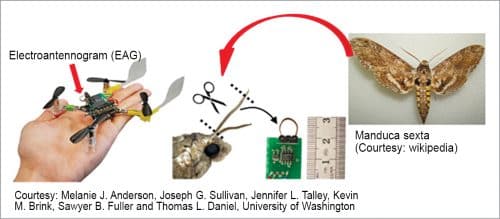
The moth chosen for this research, Manduca sexta, also known as tobacco hornworm, is a voracious leaf-feeding pest, especially at its larval stage, and feeds on tobacco leaves and defoliates the plant. It also feeds on unripe green fruits and leaves large bites on the fruit leading to plant pathogens. Farmers view this moth species as destructive insects, so they use various methods to kill this insect.
The researchers of UW place these moths in a refrigerator or on ice for 15 minutes to anaesthetise and remove one antenna, which plays the role of a sensor in their smellicopter device. The removed antenna is biologically and chemically active for four hours with a continuous decrease in its signal strength.
Flying UAVs are used for military services, in space research, in searching and rescuing lost people, in sensing leakage of gas in an environment, in tracking wildlife populations, and much more. The UW research team has compared their smellicopter with the other miniature drones that use semiconductor sensors for chemical sensing, and have reported that their hybrid biological nanodevice can detect the trail of a volatile organic chemical within a minute whereas the other similar devices require around ten minutes.
Stainless steel wires inserted to both the base of the antenna and the EAG circuit can produce a voltage ranging from 10µV to 1mV in response to any chemical stimuli. The EAG sensor is interfaced with the smallest autonomous nanodrone Crazyflie 2.0, which occupies an area of only 85cm2. Crazyflie comes with its own external sensor that uses an optical flow camera and infrared laser range finder that helps the device in measuring the velocity, hovering without a GPS and without drifting. Though insects can do 3D tracking, the team has tried 2D cast-and-surge algorithm that requires upwind flying to test the proficiency of odour localisation, and many other strategies are yet to be tested in their future work.
In a fairly consistent wind, smellicopter takes off at a height of 40cm and hovers for ten seconds, casts left and right crosswind, avoiding any obstacles coming on its way. When there is a chemical plume, the device will heave 25cm upwind and then resume casting.
The team has added two thin plastic vanes that constantly face upwind. In times when the device is not facing upwind, the force of the wind on the vanes will rotate the vehicle to face the upwind. The team is aiming to develop a smellicopter that can detect carbon-dioxide and chemical traces from an unexploded device.

Pufferbot—an aerial robot that expands to protect propellers
We know how putterfish expands to an enormous size when threatened so the predator won’t be able to get their mouth on it, and the instant inflation of car airbags in the event of a crash. The idea of increasing size by the pufferfish and the concept of vehicle airbags that inflate during crashes have been employed in Pufferbot (see Fig. 4 through Fig. 6).
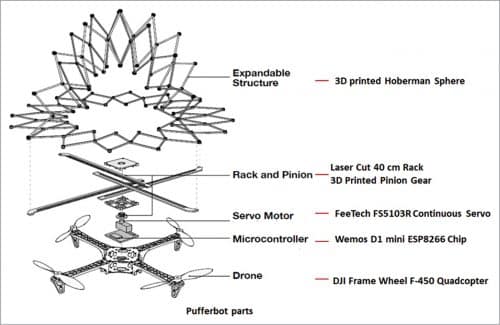
Pufferbot is teamwork of researchers from two universities—Atlas Institute, University of Colorado, and University of Calgary. It is an aerial robotic drone that expands to protect the propellers of the drone when it is close to obstacles, or when the robot is falling on the ground, or when it is navigating through cluttered spaces. The plastic hoops on top of its DJI Flame Wheel F450 frame acts as the shield and prevents unnecessary contact with the surrounding environment. The rack and pinion mechanism with one degree of freedom actuation is used to actuate the hoops.
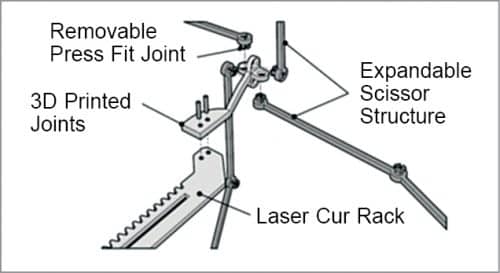
The team used a proportional integral derivative (PID) controller to maintain the position and altitude of the aerial drone. The PID helps control the drone and its expandable structure separately by a central computer or by a teleoperator. Academy Award winner Vicon motion capture system is embedded in the device for tracking and for wireless communication to inform the microcontroller to control the size of the expandable structure. If the device is manually handled, the teleoperator takes charge of controlling the robot and the expandable structure. One important virtue of this expandable structure design is, it can vary its shape depending upon the surrounding environment and make better navigation.
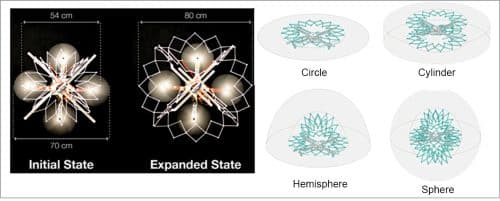
Insect inspired hydrophobia
In the design of engineering structures, the microstructure of materials is an essential feature because micro-characterisation helps build fatigue strength and increases life cycle of the material. ‘Lotus Effect’ was discovered in 1970 by German botanist Prof. Dr Wilhelm Barthlott, who used nanotechnology to mimick the property in artificial surfaces to repel liquid, which finds useful applications in scientific, industrial, and practical platforms. Artificial liquid-repellent surfaces are significant for self-cleaning, anti-icing, and anti-reflection technologies, water harvesting, and droplet manipulation.
Apart from following this traditional method, Pennsylvania State University researchers, Lin Wang et al, garnered information about nanoscopic hairs on insects. The nanoscale features on insects’ skin give them the essential property for survival.
For example, the eye of a mosquito (Fig. 7 and Fig. 8) is surrounded by densely packed nanoscopic hairs which are referred to as ‘solid fraction textures’ in engineering. Solid fraction textures of insects range from 100nm to 300nm, which adds more water-repelling benefits than the lotus effect from plants’ structure. This idea made the team to design the next generation water-repellent surface that can resist faster moving and high impact droplets.
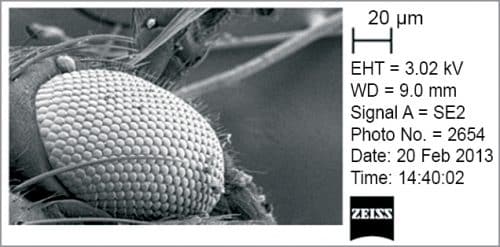
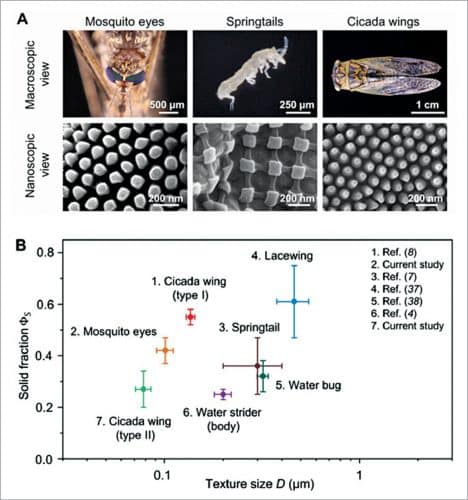
Lin Wang et al used superhydrophobic black silicon wafers with a thermally grown oxide layer; the wafers are then exposed to perfluorooctyltriethoxysilane (i.e., FAS-17) by chemical vapour phase deposition. The team suggests that the principle of compact nanoscale texture derived from insect surfaces can be applied in multiple fields from small flying robotic drones to commercial aeroplanes. As the contact time of any fast-moving or bouncing water droplets on nanoscale textured surfaces is extremely low, the team recommends researchers to apply this principle on personal protective equipment (PPE)—which is now the most essential clothing for all frontline individuals due to the Covid-19 global pandemic.
Previous to Lin Wang et al, Pallab Sinha Mahapatra et al, researchers from Indian National Academy of Engineering, have used titanium dioxide (TiO2) on cotton fabrics. TiO2 nanoparticles provide superior photocatalytic properties and excellent antimicrobial properties, thus enhancing the functionality of PPE. Researchers can take these studies to the next level and bring more innovations in all sectors.
MiRo-E Biomimetic robot in developing coding skills
In the digital age, coding is becoming a basic literacy. It is essential for children to learn coding as it imparts problem-solving, communication, creativity, designing, and many more skills that can also be applied in other aspects of practical life. MiRoCLOUD, created by Consequential Robotics, a new browser based platform, provides the opportunity for individuals of all ages and aptitudes to understand and develop the coding skills. MiRo keeps students from primary to higher education curiously engaged as it provides scope for creativity with fifty different variables making limitless opportunities for coding. MiRo develops competency, critical thinking, and free-ranging discussion in STEM that integrates the four areas of science, technology, engineering, and mathematics to provide a multi-level learning experience.
MiRo works in two ways—the cloud based and the installation based. MiRoCODE starts coding with Blockly that segues to Python. Coding is made more attractive and amusing by MiRo-E (Fig. 9), a biomimetic robot, developed by MiRoCLOUD in association with universities and educationalists. Sebastian Conran Associates studio has changed the perspective of viewing a robot merely as a gadget to a lovable friend full of potential.
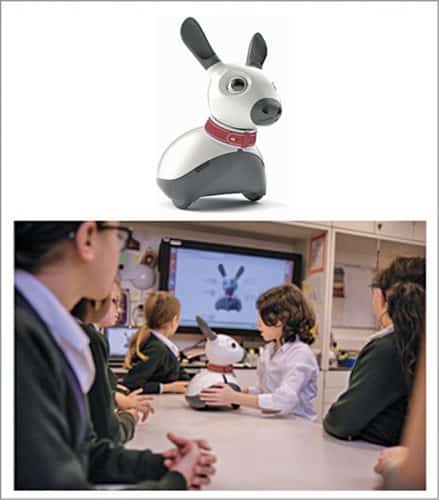
Animals have different forms of physical, emotional, and social intelligence, which inspired the MiRo team to design MiRo-E robot as an animal-like structure than human-like structure.
MiRo-E robot comes with a wide-ranging suite of biomimetic sensors including stereo vision, location hearing, ultrasonic ranging, light level sensors, infrared cliff sensors, tactile sensors on the body and head, and interceptive sensors such as twin accelerometers, joint position sensors (proprioception), temperature, and battery level sensors. There are eleven degrees of freedom—tail wagging and drooping, blinking, ear-rotation, head movements, coloured lights—to make the communication more expressive so that children ranging from normal to special needs can communicate their wants, thoughts, and opinions.
Some leading biomimetic companies and their products
Biomimetics finds applications in robotics, nanaotechnology, medical industry, artificial intelligence (AI), military, and much more.
Avinent manufactures digital dental implant systems (Fig. 10) that provide new and advanced products for the medical sector. Their products are inspired by the biochemical procedures in nature resulting in biomimetic advanced surface (BAS). The CAD CAM division in Avinent provides personalised prosthesis solutions.
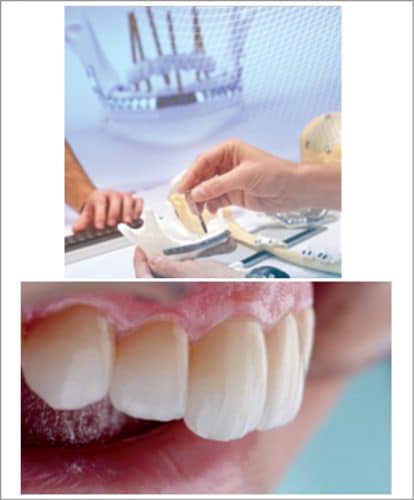
BioHorizons is developing biomimetic-inspired infra-red sensors (Fig. 11), biomimetic magnetic chip, etc. The optics in their devices utilises salamander’s eye models. Their products find application in breast cancer detection, endoscopy, image reconstruction, magnetic sensor, and surgical instrumentation.
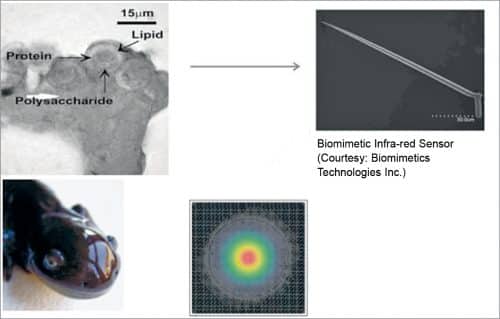
Applied Biomimetic is developing high-performance permeable membrane (Fig. 12) with narrow molecular size exclusion cut-off. The concept that inspired them is the nature’s ability to separate chemical elements at the molecular level using highly specialised proteins as tools. This biomimetic membrane finds applications in water, life science, enzyme, food, and dairy separation.
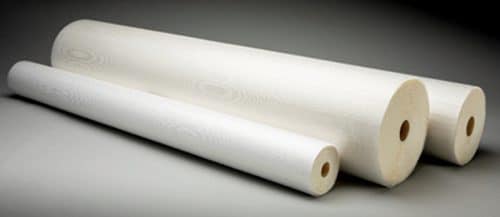
Conclusion
A product designed using biomimetic technology is not only innovative but also potentially sustainable. Nature works as a system that gives effective and sustainable outcomes. Researchers from various fields are learning this principle and creating potential, productive, and sustainable products. The main characteristic of the industrial revolution is ‘dominating and exploiting the nature.’ In contrast, biomimetics innovations are characterised by ‘learning from nature and mimicking the actual biological structures and functions.’ The rigid environmental policies in protecting the environment have powered the development of biomimetics in many countries.
The biomimetic market is endorsing excellent growth. So, let us revolutionise our inventions by drawing encouragement from nature and hypothesize designs that create effective sustainable materials.
Dr Krishna Naga is a physics teacher with over twenty years of experience in this field. Her hobbies include reading and writing






